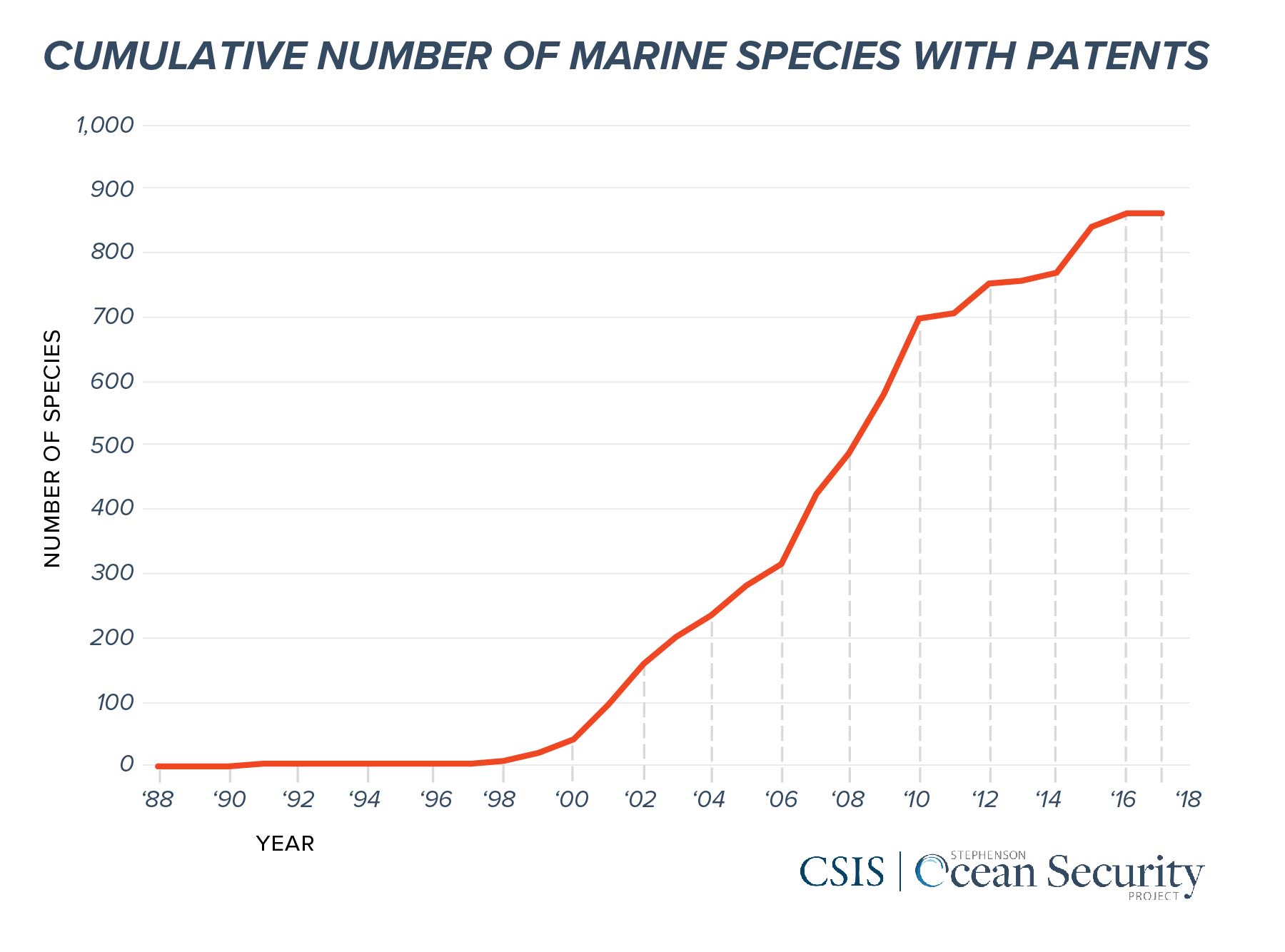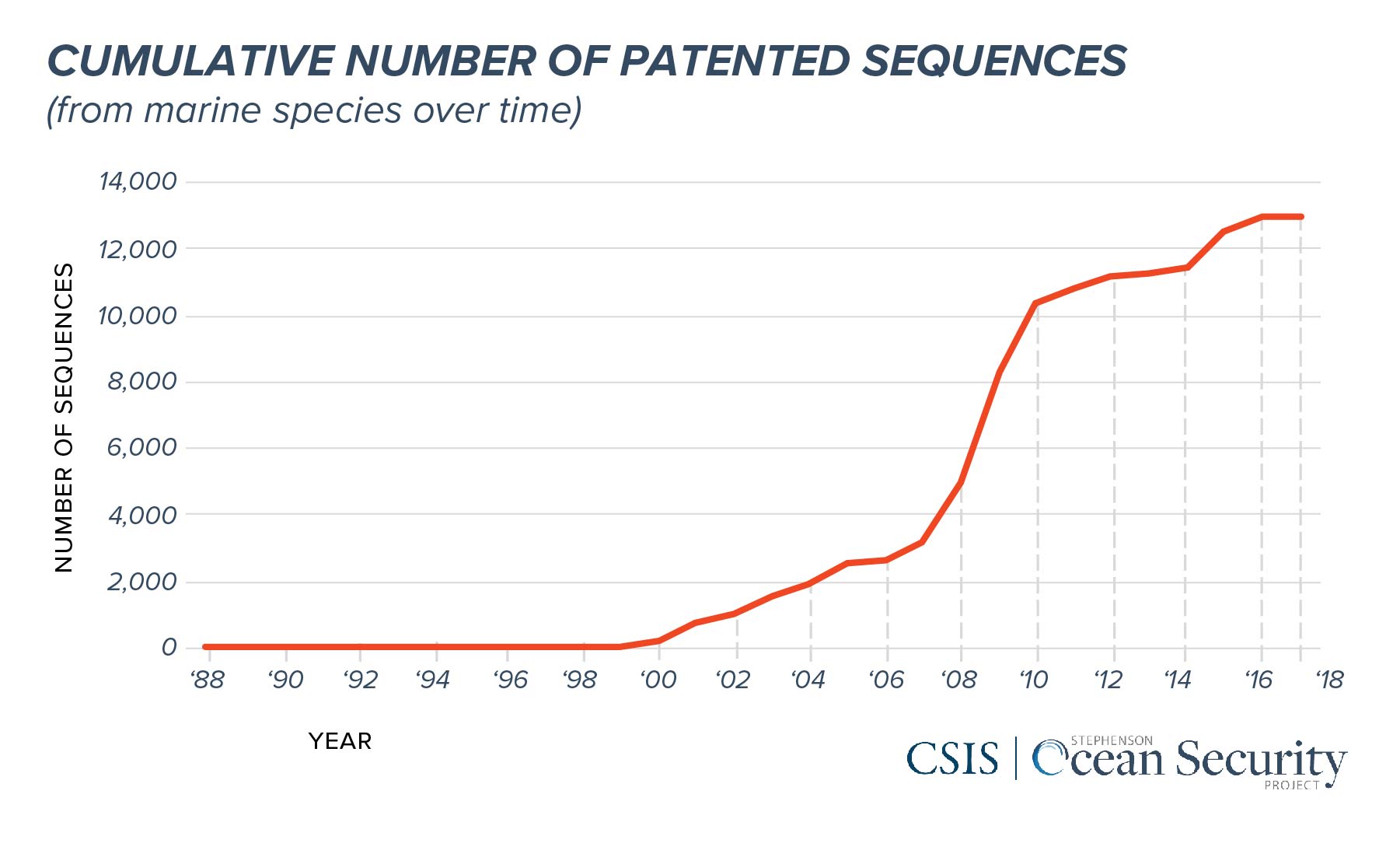To Share Or Not to Share? Biological Security Risks for Marine Genetic Resources on the High Seas
Scientific advances have made genetic data more valuable and available than ever, but broad accessibility to potentially dangerous compounds can be risky. UN delegates negotiating a High Seas Treaty should weigh any proposal to widely disseminate novel genetic information against the realities of twenty-first century biological security concerns.
The majority of the ocean is intended to be shared. Known as the high seas, these waters are beyond the jurisdiction of any one country and are open to all nations whether developed or developing, rich or poor, small or large. But this commons-based approach has a downside. Without a central authority to define and enforce the rules on the high seas—particularly when it comes to managing and using natural resources—criminal activity such as illegal, unreported, and unregulated fishing and human rights abuses can go unnoticed and unpunished.
Creating a governance system that successfully threads the needle between accessibility and security is a difficult task. Doing so on the high seas, where there is a sense of global urgency surrounding resource competition, has proved to be particularly challenging. Delegates at the United Nations have spent the past year negotiating the High Seas Treaty to govern the sustainable use of biodiversity in areas beyond national jurisdiction, although the fourth and final meeting has been postponed due to the ongoing Covid-19 pandemic. One of the issues at stake in the treaty is the attribution of ownership for marine genetic resources (MGRs) discovered on the high seas. Treaty negotiators want to ensure that wealthy, developed nations do not benefit from MGRs at the expense of smaller countries, but delegates should view this desire for equity in the context of modern biological security risks.
There is no universally accepted definition for MGRs—the Convention on Biological Diversity broadly defines them as “genetic material of actual or potential value,” although in practice MGR is often used as a catch-all term for any compound or product isolated from a marine organism. The idea of “potential value” is inspired by previous successes, including a cold-water fish protein found in anti-freeze and marine-snail venom used in chronic pain medication. These favorable outcomes, combined with the prospects offered by an ocean still 95 percent unexplored, underpin the inclusion of MGRs in the High Seas Treaty.


However, the process of discovering and commercializing a new marine compound is often costly and complex. The expenses associated with a research expedition—just chartering the vessel for one week of deepwater coral prospecting was estimated to cost over $450,000—are prohibitive for all but the richest nations or corporations. Such a high barrier to entry opens the door for biopiracy, where wealthy countries profit off resources plundered from weaker states without providing just compensation. The international community created the Nagoya Protocol in 2010 to try and prevent this practice, although its effectiveness is somewhat limited by weak enforcement mechanisms and varying degrees of domestic implementation.
Regardless, the Nagoya Protocol only addresses resources that originate within a country’s exclusive economic zone and thus would not apply to MGRs found in areas beyond national jurisdiction. If a new marine organism is discovered on the high seas, are all countries—including smaller, less-capable ones—entitled to any scientific knowledge or commercial benefits gained? Or are these reserved solely for the prospecting nation? The crux of this debate is whether MGRs should be governed under the “common heritage of mankind” or the “freedom of the high seas” principle, which determines whether the act of discovering a new MGR affords a nation ownership and control over it.
These two principles originate in the United Nations Convention on the Law of the Sea. This treaty divides areas beyond national jurisdiction into two categories: the “high seas” and the “Area,” which generally correspond to the water column and the seafloor, respectively. The “freedom of the high seas” policy applies to activities like fishing, where nations may keep their catch and use it as they wish. For resources sourced from the “Area,” the rules are different. Since the seafloor is designated as “the common heritage of mankind,” most exploration and mining here must be done for the greater good of humanity, with the exception of commercial ventures. The International Seabed Authority is responsible for regulating these practices and ensuring that any benefits—both financial and scientific—are shared appropriately.
Those who want to see MGRs governed under the “freedom of the high seas” clause, including the United States, tend to have strong research and development initiatives and want to ensure that new regulations do not stifle future innovation. Developing nations with limited capabilities tend to prefer the “common heritage of mankind” approach, while the European Union and a small contingent of countries fall somewhere in between. Until this point, the differences in each country’s stances fall largely on two axes: research innovation and benefit sharing. Negotiators have devoted nearly all of their deliberative bandwidth to resolving these complex topics but in doing so have unintentionally excluded other considerations, including critical security matters.
The proposed policy frameworks are designed primarily to address successful or useful MGRs but are not necessarily equipped to handle those with harmful applications. The trajectory of saxitoxin provides a glimpse into the security ramifications of such a discovery. Produced by marine dinoflagellates and freshwater algae, saxitoxin was discovered unexpectedly in the 1920s as part of an investigation into two Californians who died from consuming contaminated shellfish. Once its extreme toxicity became apparent—saxitoxin is 1000 times more lethal than cyanide—it quickly transitioned from a food safety concern to an agent in the U.S. Army’s chemical weapons program. In recognition of its destructive potential, saxitoxin was eventually banned under both the Chemical Weapons Convention and the Biological Weapons Convention.
To weaponize saxitoxin, scientists would have generally required direct access to the saxitoxin-producing organisms or to the toxin itself. Modern-day research tools have greatly reduced this reliance on physical samples, and future advances in biotechnology will mean that an organism’s underlying genetic sequence is all that is needed to conduct research. This matters for MGRs on the high seas because many management proposals hinge on the idea of widespread data sharing, including genetic sequences, as a means of equitably distributing benefits. Such a system could be revolutionary for collaboration and innovation, but UN delegates should ensure that the advantages of a globally accessible genetic catalog outweigh the risks when the compounds in question may be dangerous.
The 2005 reconstruction of the 1918 flu virus is a useful analogy. These researchers elucidated the genetic cause of this strain’s extreme virulence and published the full genome in the hopes of better preparing the world to combat a future pandemic. They faced criticism for providing a potential roadmap for malign actors to engineer a deadly virus, but their publication was ultimately allowed for its contribution to public health. The same principles apply to MGRs on the high seas. The growing accessibility and utility of genetic data is certainly useful to the extent that it enables benefit sharing, and many of the suggested governance structures rely on this fact. But these proposals should be evaluated against the potential unintended consequences of making novel genetic information widely available, especially if it could be appropriated for misuse. Moving forward without a careful risk-benefit analysis would be shortsighted and unwise.
Regulating a discipline as novel as marine genetic resources, especially on the high seas, is a herculean task but a necessary one. By balancing evolving biological security concerns with elements from both the “freedom of the high seas” and the “common heritage of mankind” approach, treaty negotiators can craft an equitable and prudent strategy that truly ensures safe and accessible oceans for all.

